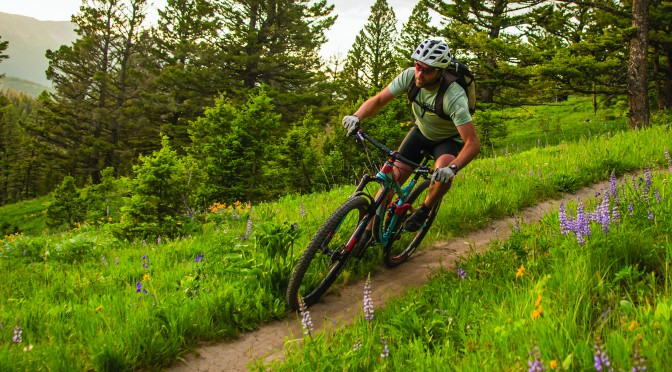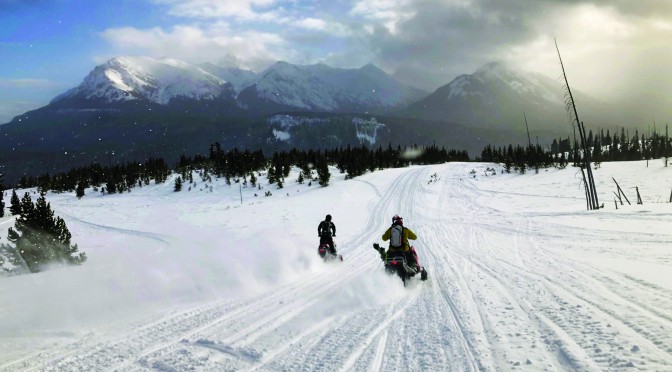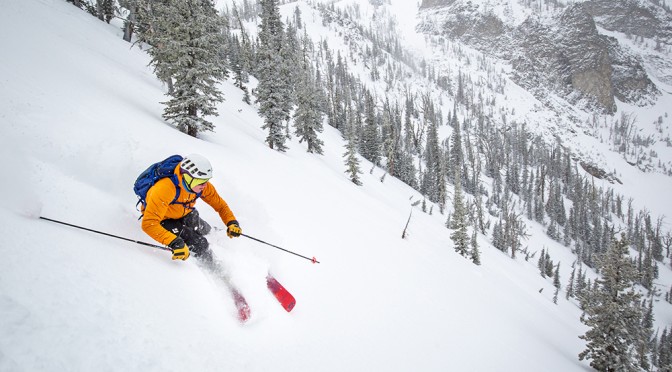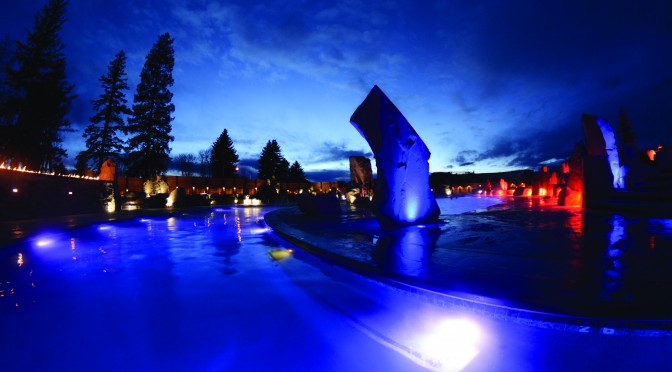by Adam Brown
Biking around the Bozone.
Take this for a spin: when it comes to mountain biking, Bozeman’s got it all. Countless alpine rides meander through lush forests and across rocky mountainsides, while fast, well-built, downhill-specific trails get the adrenaline flowing. We also have great desert-style riding just outside of town, as well as low-angle logging roads for leisurely jaunts. And when you don’t feel like driving, you can get your biking fix right out the back door.
Where to Go
Beginner
In town, hop on the Main Street to the Mountains trails at any point and go until the sun sets. Explore gravel paths through subdivisions in every direction, or pedal down the Gallagator to Peets Hill as you get your steering and balance dialed. Next you can tack on Highland Glen and Painted Hills. These trails are popular options for folks to rack up some convenient mileage before or after work. You can even ride all the way up Triple Tree if your heart and legs can handle it.
Now that you’ve gotten a feel for your bike, pedal up the old logging road alongside Bozeman Creek—also known as Sourdough. This all-dirt path climbs steadily for miles, and you can turn around whenever you’d like, to coast back down. If you take the left fork just before the bridge (about five miles in) toward Mystic Lake, the trail shrinks to singletrack and increases in difficulty—this route is called the Wall of Death.
Intermediate
Once you’re comfortable riding singletrack, head over to Crosscut for one of the area’s best trail systems. Here you’ll find a web of great single- and double-tracks for many different riding styles. Make a cross-country style loop from Loggers to the East Bridger North trail, or hop on the What Goes Up climbing trail to the Must Come Down trail for a flowy downhill experience.
Up in Hyalite, the Moser Creek area has several loop options, all of which feature shorter climbs than some of Hyalite’s burlier rides like History Rock. Although Moser’s trails are on the map, there are some confusing junctions, so do your research and figure out which loops you like most.
Advanced
South of town in the Gallatin foothills is Leverich, Bozeman’s most popular mountain-bike trail and the Custer-Gallatin National Forest’s first dedicated bike trail. During the summer, the parking lot overflows with vehicles, so make some biking friends to carpool with or park down at Nash Park and ride the road up. Leverich is meant to be ridden clockwise. Hop on the uphill-designated trail straight out of the parking lot, then climb a series of tough switchbacks and steep, rocky sections before finally topping out. Enjoy a stellar downhill with plenty of berms, jumps, hootin’, and hollerin’.
For more bike-specific trails, head to Copper City for a 20-mile network with something for everybody. Keep in mind that hikers and runners are also welcome here. You’ll find everything from a fun skills park and mellow beginner trails to rough and rowdy descents, including massive jump lines.
Saddle Up
First things first: you need a bike, and bikes are expensive, so you’ll need to overcome the initial sticker-shock. But consider yourself lucky, because our town runneth over with deals on gear. If you’re looking to spend as little as possible, start at a second-hand store, online marketplace, pawn shop, or the annual GVBC Bike Swap. If you’re willing to shell out for a new set of wheels, hit the bike shops. Remember that full-suspension is often preferred, but will be significantly more expensive to purchase and service. For some, especially casual bikers, buying a hardtail can save a grand or more.
Next, you’ll need a helmet, pack, and repair kit for those inevitable mechanical failures on the trail, plus the standard outdoor equipment: extra layer, rain shell, first-aid kit, and bear spray. Padded gloves are a great option, as are sunglasses to keep wind and debris out of your eyes while riding. You might also want some knee and elbow pads, because the crashing never stops, even after you improve.
Bikes are fun because they are freeing. How else can human power alone get you so far out there? But a malfunction is inconvenient at best, and extremely dangerous at worst. Knowing how to make a few fixes on your own will prove beneficial when something goes wrong out on the trail, and you’ll save some money because you won’t need to shell out cash every time you need work done. There are lots of great bike classes and resources in the area. Check in with local bike shops, or head to outsidebozeman.com/biking for more reading.
Etiquette
It’s always important to consider other trail users—whether they’re on foot, horseback, or motorized equipment. Use your discretion and pay attention. Spot approaching hikers as early as possible. They have the right of way, regardless of conditions, but still, there’s a good chance they’ll step off the trail to let you pass without interrupting your ride. If not, pull off to the side, give a polite nod, and carry on. Always give horses a wide berth to avoid spooking them, and when possible, pull off on the downhill side of the trail. Greeting the rider in a friendly voice often helps ease a spooky horse, too. If a biker comes upon another biker, the one going uphill has the right of way. If you’re traveling with a four-legged friend, make sure to keep her under control. And be prepared to clean up if she makes a deposit on or near the trail.
Trail preservation is the name of the game when on wheels. Since bikes damage the trail more than boots, it’s a rider’s responsibility to limit the impact. Don’t go out when trails are muddy. A good rule of thumb is that if you’re leaving deep marks in the dirt, you should consider walking that section instead of riding. If the conditions persist, turn back and try a different ride. Avoid biking off-trail, which damages vegetation and can create incidental and unwanted walkaround trails. If you come across a pool of water, take a few minutes to dig a little trench and drain it.








